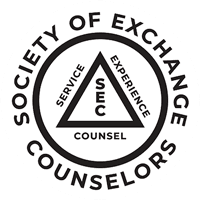Our History
In the 1950’s, Realtor Richard R. Reno of San Diego, California, observed that if people exchanged real estate it could solve many of the real estate circumstances existing in San Diego’s overbuilt market. He saw exchanging as an alternative to the unavailable cash buyer.
He believed that people who owned real estate did not necessarily want to totally divest themselves of real estate ownership, but were uncomfortable in the circumstances surrounding their current ownership. In effect, the problem was not with the property, but with the people who owned it. He went on to hypothesize that there was no bad real estate, only inappropriate or untimely ownership.
This hypothesis of Mr. Reno led to the idea that the most effective way to deal with real estate was to abandon the traditional approach of focusing entirely on the property, the “bricks and mortar”, and incorporate into the process the circumstances surrounding the ownership of the property. He recognized that the reason(s) an owner wanted to sell, and what the owner would do with the cash, if it was obtainable, was the key to successful transactions.
Two basic axioms evolved:
- Working with people is more important than working with property. Properties do not have needs and desires, people do.
- Client management, the ability to deliver, stems from the relationship between the client and the broker. The underlying premise is that the client’s best interests are paramount.
Mr. Reno also observed that there was a need for education in counseling and in exchanging. He advocated a professional approach that must incorporate the understanding that cash itself is not the answer to all real estate conveyances. Unless the personal motivation, benefits sought, and tax matters are considered prior to a real estate transaction, a client’s best interest may not be served.
It also occurred to Mr. Reno that a national group, meeting regularly, could effectively address issues relating to a client’s particular real estate circumstances. Brokers representing diversified owners and various markets could provide a forum that would generate solutions to owners who wanted to change their real estate portfolio.
In November, 1961, nineteen Realtors met with the common goal of forming a national organization composed of individuals who were committed to practicing creative real estate and counseling. This was the first meeting of the Society of Exchange Counselors and has since become a prototype for most marketing groups internationally.
Today the Society of Exchange Counselors maintains a membership, which represents most of the North American continent. Membership is by invitation only. Its members are selected from those brokers driven by a focus on people, and who possess proven skills in counseling, exchanging and creative real estate.
